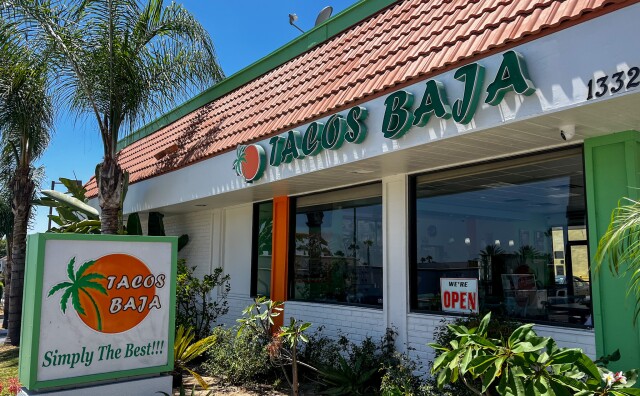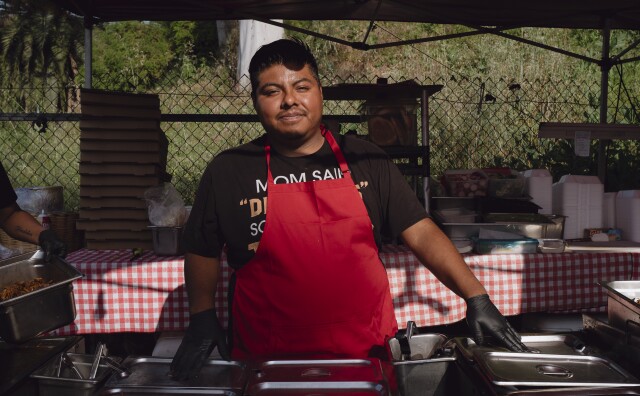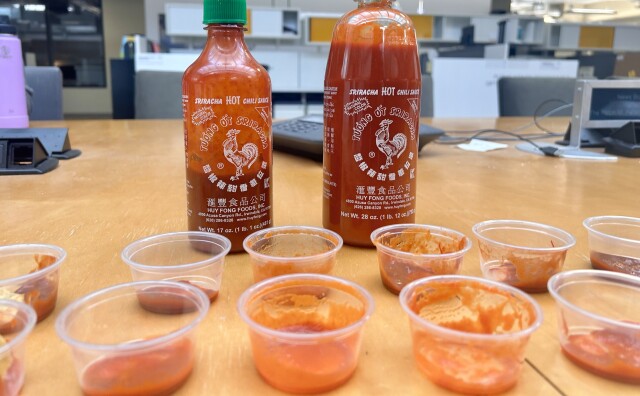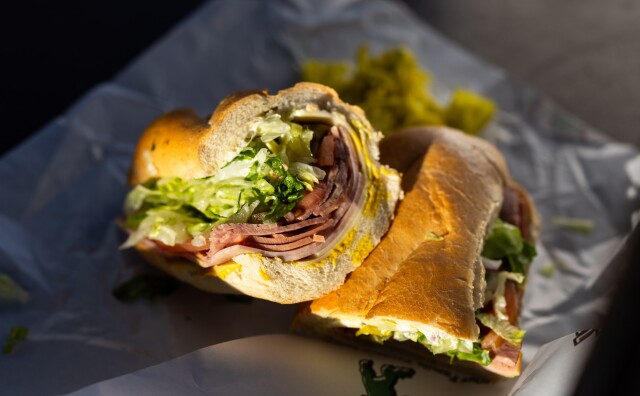When we think of tacos, we drool over asada, al pastor, carnitas and chicken. OK, how about one made with chicken sausage?
That particular item is part of the breakfast menu at Mama’s Chicken, a soul food spot in Hyde Park that is known for its chicken and turkey sausages.
“One thing you can’t go wrong with is the chicken sausage taco,” Ronnie Cannon says. He’s been coming here for over 20 years. “It’s definitely worth the wait.”
There’s a breakfast burrito on the menu, too.

The small restaurant and market is a mainstay for folks in this South L.A. community. Its popularity is palpable as customers patiently line up at least 30 minutes or so to get prepared food to go; others pick up uncooked sausages to take home. Chicken sausage is a South L.A. staple that originated in this community, but it's spread to other parts of the country. Another man waiting for food says he’s visiting all the way from New Orleans and had to make a stop here.
Mama’s advertising is pretty much just word of mouth. “I don't want to get a big head or anything, I love people,” says owner Karen “Mama” Whitman. “We watch out for them and they watch out for us, and it's just a wonderful thing, you know? And so now we get people from everywhere.”
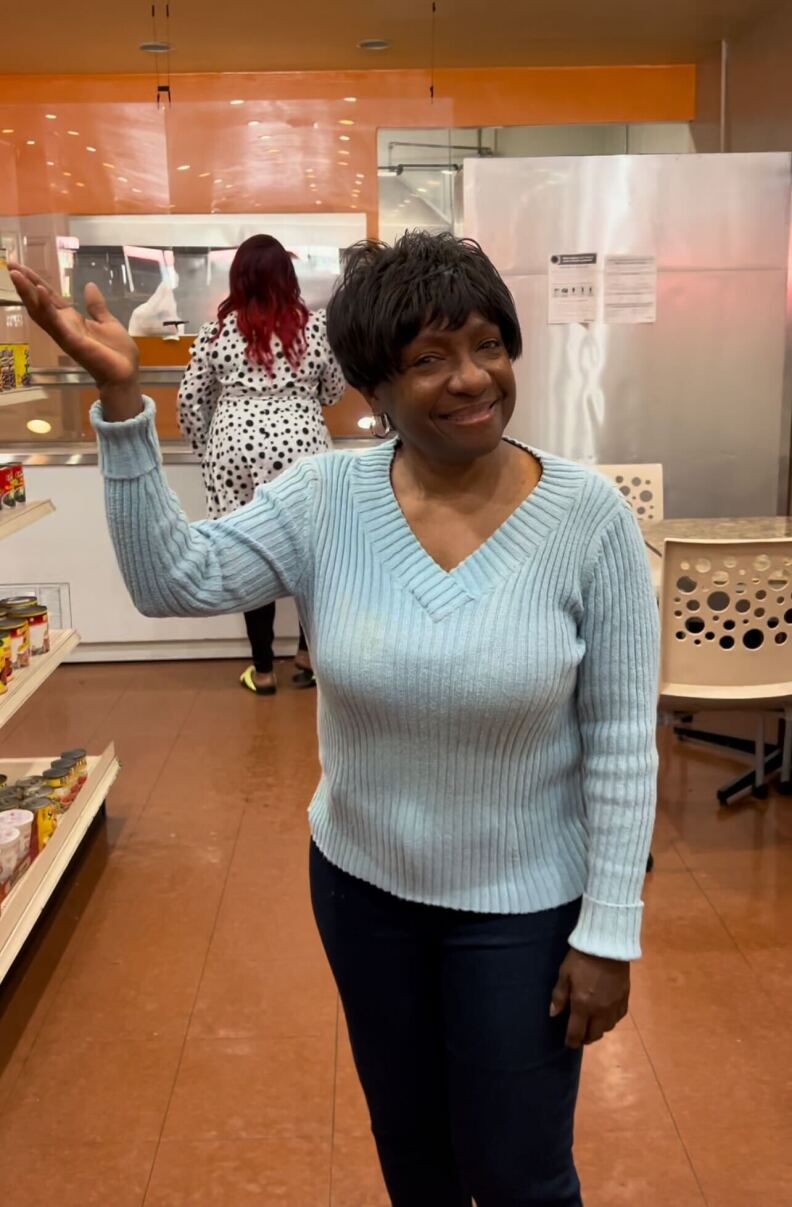
Whitman has been running the restaurant for nearly 60 years, taking over from the original owner Elbert Hall Jr., who opened it in 1964, according to Mama’s website, “as a small hamburger stand with only enough room for one employee.”
Now, before we move on, think about Mama’s menu: tacos at a soul food restaurant. You’re probably not gonna find that in too many other cities. Just hold on to that thought as we explore what makes the West Coast take on this cuisine so unique.
Migration adds flavor to L.A.’s cuisine
L.A.’s food scene is so original because of migration from all over the world, Christopher Carter tells me. He's the author of The Spirit of Soul Food, and an expert on food and racial justice. The soul food here isn’t the same as the cuisine in Texas or Louisiana — we both agree.
There's something about growing up under such immense suffering and oppression that we've figured out that allows us to survive.
Carter is talking about the blending of regional flavors and the ways Black and Brown communities have been living close to each other in places like South L.A. He gives a nod to the city’s Indigenous, Latino, Asian American and Black communities as he explains the interchanges of cuisines.
In many cases, these communities were directly impacted by redlining. Non-white residents in Los Angeles were excluded from purchasing — or even renting — homes in certain areas of the city and that pushed these communities of people into close proximity to one another.
Southern cooking spreads throughout the country
To understand the birth of soul food in America, Carter explains, we must take a far look back into Black history.
“It's helpful for us to think about soul food as an anti-racist response to white supremacists,” he says. “At its core, that's really what it is. And so it does have to go back further than the Great Migration."
He traces further back to the West African slave trade, as African farmers were captured and sold because of their agricultural acumen. “White colonialists didn't know how to do it,” he says.
As Africans were forced on ships to the Americas, they hid seeds and other items in their hair to grow similar crops they cultivated in Africa. He lists watermelons, okra and gourds that are unique to Africa.
“What we have is this combination and this fusion during enslavement,” Carter says. “Of those kinds of West African soupy stews with dark leafy greens, with some of the tomatoes and other kinds of vegetables that are unique to the American continent.”
And so, soul food was born, though it wouldn't be called that for years.
As I chatted with Carter, it became evident that soul food is a product of some really troubling history, but also of survival for many Black people in this country. (In some cases, it’s also joy.)
“There's something about growing up under such immense suffering and oppression that we've figured out that allows us to survive,” says Carter. “It's manifested in this food, and it's a way for people who have migrated in the first great migration, particularly up to the northeast, to feel like home.”
The Second Great Migration brings soul food — and community — to California
As Black communities began moving west during the Second Great Migration in the 1940s to places like California and Los Angeles, folks began to open restaurants and shops to bring a piece of home with them.
People opened businesses “to be able to share that with the broader community, because you're dealing with less racism than you dealt with in the South and in the Northeast — racism but just less racism,” Carter says.
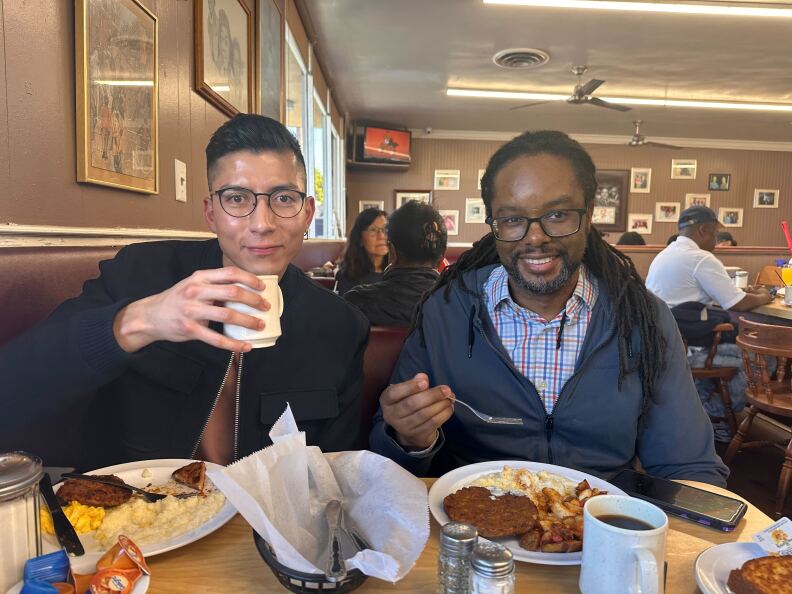
Now, you can find soul food eateries that really reflect that West Coast flavor: Mama’s Chicken in Hyde Park, Dulan’s Soul Food Kitchen ,a classic in Inglewood, the family-style joint Serving Spoon, and there’s more.
The Serving Spoon in Inglewood, whose original owner is from Ohio, is an example of how soul food connects communities. The mid-size eatery is simple on the inside, but has vibes turned to 100. R&B and funk blasts from the parking lot speakers, customers chat over mimosas and the servers don’t miss a beat with the coffee pours. It feels like everyone knows each other.
This is Carter’s first time here, but he already understands what a place like this truly means.
“It's packed because it’s community, man,” he says, looking around at the bustle. “All these people here, this is folks connecting. It’s a place where we can come and feel safe.”
(Pro-tip: order the fried cornbread — it’s from The Serving Spoon’s secret menu.)
Additional reporting by How to LA producer Megan Botel.





